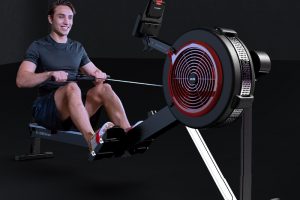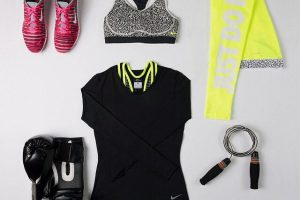In the world of sports, every piece of equipment plays a crucial role in an athlete’s performance and comfort. While shoes, apparel, and accessories often take the limelight, one often overlooked yet incredibly important piece of sports gear is socks. Sports socks are not just there to keep your feet warm or cushioned; they serve several critical functions that can significantly impact your athletic performance and overall well-being. This article explores the importance of sports socks and provides guidance on how to choose the right sports socks that suit your specific needs.
The Role of Sports Socks in Athletic Performance
Sports socks play a multifaceted role in enhancing athletic performance and preventing injury. These are the key functions of sports socks in sports:
1. Moisture Management
Moisture control is one of the most critical functions of sports socks. During physical activity, your feet can sweat significantly, leading to wet socks and discomfort. Moisture-wicking sports socks help in keeping your feet dry by pulling moisture away from the skin. This not only prevents discomfort but also reduces the risk of blisters and fungal infections.
2. Cushioning and Impact Protection
Properly cushioned sports socks provide impact protection for your feet. This is particularly important in high-impact sports like running, basketball, and tennis. The cushioning in the sock absorbs shock, reducing the stress on your feet and joints.
3. Arch Support
Sports socks often come with built-in arch support. This feature is especially beneficial for individuals with flat feet or those who require additional support during physical activities. Proper arch support can enhance stability and reduce the risk of overuse injuries.
4. Compression
Compression sports socks are designed to improve blood circulation in the legs and reduce muscle fatigue. They are commonly used in endurance sports like long-distance running and cycling. Graduated compression socks apply more pressure at the ankles and less as they move up the legs, aiding in venous return.
5. Blister Prevention
Blisters can be a significant nuisance in sports. Ill-fitting socks or socks made of materials that cause friction can lead to blisters. Sports socks are often designed with blister-prevention features, including seamless construction and anti-blister materials.
6. Temperature Regulation
Sports socks can help regulate foot temperature. In cold weather, thermal sports socks can keep your feet warm, while moisture-wicking socks are essential in hot and humid conditions to prevent overheating.
7. Odor Control
Moisture-wicking socks also aid in odor control by reducing the growth of odor-causing bacteria. This is particularly important in sports where foot odor can be a common issue.
Choosing the Right Sports Socks
Selecting the right sports socks involves considering various factors, including the type of sport, your foot shape, and personal preferences. Here are some essential tips for choosing sports socks that suit you:
1. Sport-Specific Socks
Different sports require different types of socks. For example, running socks are designed to provide cushioning and reduce friction, while soccer socks are typically longer to cover shin guards. Consider the specific demands of your sport when choosing socks.
2. Material Matters
The material of your sports socks is crucial. Common materials include cotton, wool, synthetic blends, and merino wool. Each material has its advantages and disadvantages. Cotton, for instance, can absorb moisture but may retain it, while merino wool is naturally moisture-wicking and temperature-regulating.
3. Cushioning and Padding
Consider the level of cushioning you need based on the impact of your sport. Running and basketball may require more cushioning than activities like yoga or weightlifting. Choose socks with adequate padding to protect your feet during your chosen sport.
4. Arch Support and Fit
Socks with arch support can help individuals with specific foot issues or those who need extra stability. Ensure the socks fit snugly but not too tight to avoid constriction and discomfort.
5. Length and Style
Socks come in various lengths, from no-show to crew to knee-high. The length you choose should align with your sport’s requirements and personal comfort. Additionally, consider the style and color that best suits your preferences.
6. Moisture-Wicking Technology
Opt for moisture-wicking sports socks, especially if you engage in activities that cause significant sweating. This technology helps keep your feet dry and reduces the risk of blisters and fungal infections.
7. Compression
If you participate in endurance sports, consider compression sports socks. These can aid in improving blood circulation and reducing muscle fatigue during long workouts.
8. Try Before You Buy
It’s essential to try on sports socks with the sports shoes you intend to wear during your activities. This ensures a proper fit and helps you identify any discomfort or potential issues.
9. Consider Personal Preferences
Ultimately, the choice of sports socks also depends on personal preferences. Some individuals prefer thin, lightweight socks, while others may favor thicker, cushioned options. Experiment with different types to find what suits you best.
Taking Care of Your Sports Socks
Once you’ve selected the perfect sports socks, proper care is essential to ensure their longevity and continued performance. Here are some tips for taking care of your sports socks:
- Wash Them Properly: Follow the care instructions on the label, which often recommend gentle washing and avoiding fabric softeners, which can reduce moisture-wicking properties.
- Dry Them Correctly: Air-drying is the best method to preserve the elasticity and shape of sports socks. If you use a dryer, use a low-heat setting.
- Rotate Your Socks: Having multiple pairs of sports socks allows you to rotate them, reducing wear and tear on any single pair.
- Replace Them When Needed: Sports socks, like any gear, have a limited lifespan. Replace them when you notice signs of wear and tear, such as thinning, holes, or reduced elasticity.
Conclusion
Sports socks are often underestimated in their role, but they are a critical piece of sports equipment that can greatly impact your athletic performance and comfort. Whether you’re an avid runner, a dedicated basketball player, or a weekend hiker, choosing the right sports socks that suit your needs is essential.
Consider the specific requirements of your sport, the material, cushioning, and features that align with your preferences, and take good care of your socks to ensure they continue to serve you well. A comfortable and well-protected pair of feet can make a significant difference in your sports endeavors, allowing you to perform at your best and enjoy your athletic pursuits to the fullest.





Add Comment